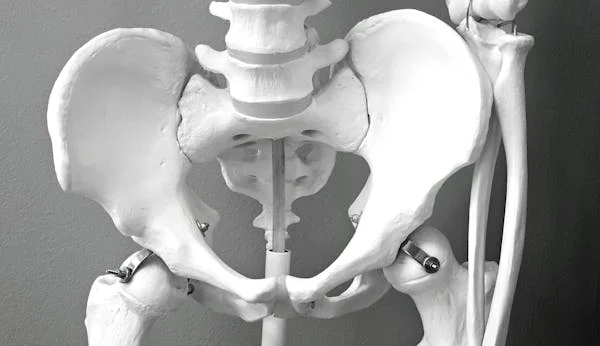Hip Joint Pain After Hiking. Hiking is a fantastic way to enjoy nature and stay active, but for numerous trampers, discomfort or pain in the hipster’s joint after a journey can be an unpleasant strike. Hipster joint pain after hiking can be caused by overuse, poor form, or underpinning conditions. This companion explores the common causes, forestallment strategies, and recovery styles to help you manage and reduce discomfort, allowing you to hike pain-free.
1. Understanding the Causes of Hip Joint Pain After Hiking
Overuse and Strain on the Hip Joint
One of the most common causes of hipsterism joint pain after hiking is overuse. Long hikes, steep inclines, or carrying a heavy pack can stress the hipster joint and girding muscles. This strain can lead to soreness or inflammation, especially if the body isn’t used to similar exertion. repetitious stir on uneven terrain further
the issue, as the hipster joint works harder to stabilize the body.
Improper Gear or fashion
They are using indecorous hiking gear or having poor posture while hiking can also contribute to hipsterism pain. Shoes without acceptable support can beget misalignment in the hips while carrying a pack that isn’t duly acclimated can place redundant pressure on the joints. Incorrect hiking form, similar to leaning too far forward or taking exorbitantly long strides, can strain the hips unnecessarily, leading to discomfort after the hike.
2. Precluding hipsterism Joint Pain During and After Hiking

Choosing the Right Gear
Investing in quality hiking shoes with proper bow support and bumper can help minimize hipsterism strain. Shoes that fit well and are designed for the terrain you’re hiking on give stability and help misalignment. Also, using a well-fitted pack with a hipsterism belt distributes weight unevenly, reducing the burden on your hips and lower body.
Rehearsing Proper Hiking ways
espousing good hiking ways can help inordinate stress on the hipster joint. Take a shorter way, especially on inclines, and keep your body upright with a slight forward spare. Using touring poles can also help by reducing the impact on your hips and knees, furnishing redundant stability, and distributing the trouble across your arms and legs.
3. Post-Hike Recovery for Hip Joint Pain
Stretching and Cool-Down Exercises
After a hike, taking time to stretch can palliate miserliness in the hips and girding muscles. Focus on stretches like the chump disguise, hipsterism flexor stretches, and hamstring stretches to target the areas most affected by hiking. Cool-down exercises similar to gentle yoga or a brisk walk can help reduce muscle stiffness and ameliorate blood inflow, speeding up recovery.
Ice and Rest for Sore Hips
still, applying ice packs to the affected area can reduce inflammation and numb discomfort, If you witness pain after hiking. Resting your hips for a day or two allows the napkins to recover. Elevating your legs and using untoward anti-inflammatory specifics, if necessary, can further palliate pain. Avoid emphatic conditioning during this recovery period to help exacerbate the pain.
4. When to Seek Medical Attention for Hip Pain

Patient or Severe Pain
While occasional soreness is common after hiking, patient or severe hipsterism joint pain may indicate an underpinning issue. However, consulting a medical professional is pivotal, If the pain doesn’t ameliorate after many days of rest or worsens. Conditions similar to bursitis, tendonitis, or arthritis could be contributing to your discomfort and bear targeted treatment.
Signs of Serious Injury
In rare cases, hip joint pain after hiking may result from a more serious injury, similar to a labral gash or stress fracture. Symptoms like sharp, pecking pain, limited mobility, or swelling around the joint shouldn’t be ignored. Seeking prompt medical evaluation ensures proper opinion and treatment, precluding long-term damage to the hipsterism joint.
5. Strengthening Exercises to Prevent Hip Pain
Building hipsterism and Core Strength
Strengthening the muscles around the hipster’s joint can ameliorate stability and reduce the threat of pain after hiking. Exercises like clamshells, islands, and side leg raise target the glutes and hipsterism abductors, enhancing their capability to support the joint. Incorporating core- strengthening moves like planks and side planks also helps maintain proper posture and balance during hikes.
Low- Impact exercises for Flexibility
In addition to strength training, low-impact conditioning similar to swimming, cycling, or Pilates can ameliorate inflexibility and common mobility. These exercises give a gentle way to condition your hips without the impact of hiking. Regular practice of these exercises can enhance overall abidance and adaptability, reducing the liability of post-hike discomfort.
FAQs About Hip Joint Pain After Hiking
-
What causes hipsterism joint pain after hiking?
- Overuse, indecorous gear, poor hiking fashion, or underpinning conditions like bursitis or arthritis can lead to hipsterism pain after hiking.
-
How can I help with hipsterism pain while hiking?
- Use probative hiking shoes, a duly fitted pack, and touring poles. Maintain good posture and take shorter ways to minimize common strain.
-
What are the stylish recovery styles for hipsterism pain?
- Stretching, applying ice, resting, and using anti-inflammatory specifics can help palliate soreness and promote mending.
-
When should I see a croaker for hipsterism pain?
- Still, worsens, or is accompanied by swelling or limited mobility, If the pain persists for further than a many days.
-
Are there exercises to help hipsterism pain from hiking?
- Yes, strengthening exercises like clamshells, islands, and planks, along with low-impact conditioning, can ameliorate hipsterism stability and inflexibility.
Quick Tips for Hiking Without Hip Joint Pain
Warm Up duly: Start your hike with light stretching or a brisk walk to loosen up your muscles and joints.
Hydrate and Energy Up: Staying doused and maintaining proper nutrition supports common health and reduces fatigue.
Take Breaks: Rest periodically during your hike to help overuse the hipster joint.
Acclimate Your cargo: Use a well-fitted pack with a hipsterism belt to unevenly distribute weight and reduce pressure on your hips.
Hear to Your Body: Stop hiking if you feel sharp or unusual pain, and address it incontinently with rest and recovery measures.
Conclusion
Enjoy Hiking Without Hip Pain
Taking Control of Your Hiking Experience
Experiencing hip joint pain after hiking can be frustrating, but with proper medication and care, it’s possible to minimize discomfort and help unborn issues. From choosing the right gear to rehearsing good fashion and prioritizing recovery, these strategies allow you to enjoy hiking while keeping your hips healthy and strong.
Embrace the trip with Confidence.
Hiking offers inconceivable physical and internal benefits, and addressing hipster joint pain ensures that you can continue exploring the trails you love. By strengthening your body, staying aware of posture, and taking a visionary way to watch for your hips, you can make every hike a positive and pain-free adventure. In conclusion, with the right approach, you can embrace the manners of hiking without letting hipster joint pain hold you back.

